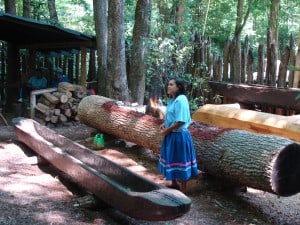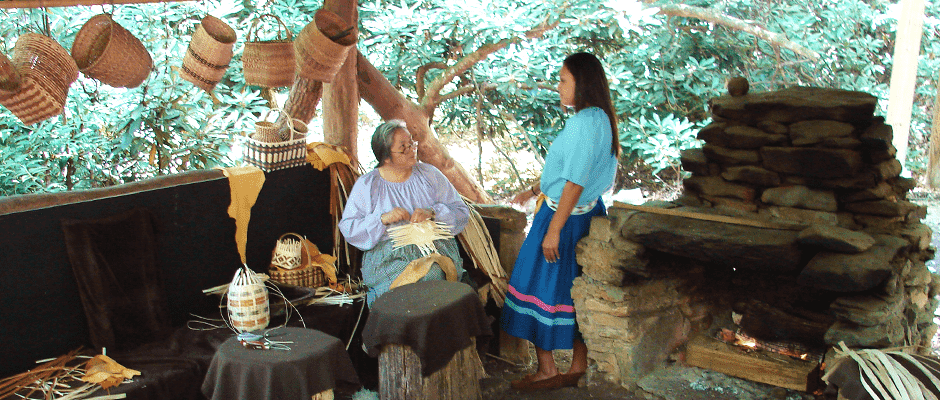Share this article
The eastern band of Cherokee Indians: A story of resilience
Did you know the grouse taught the turkey to gobble? Well, the grouse tried to teach the turkey to shout, but the turkey got so excited to share his new talent that he gobbled instead and has been gobbling ever since. So the Cherokee Indian story goes.
Cherokee Indians have been passing stories from generation to generation for thousands of years. It is unknown when the Cherokee became established in the Southeastern United States, but by the time Spanish conquistador Hernando de Soto passed through in the 1500s looking for gold, the Cherokee were spread throughout the southern Appalachians.

Step into the 1700s Cherokee life at Oconaluftee Indian Village with a cultural expert tour guide. ©Daniel Ray
The Cherokee worked for centuries to maintain a positive relationship through diplomacy with the foreigners. Still, 200 years after de Soto sought gold in the Appalachians, nearly 75 percent of Cherokee land had been lost through treaties with the colonies and America’s new government.
The 1828 discovery of gold in the Georgia mountains and the gold rush that followed prompted President Andrew Jackson to sign the Indian Removal Act of 1830. The forced displacement of the Cherokee from their Appalachian homelands 1200 miles west to present-day Oklahoma is now known as the Trail of Tears.
Those Cherokee Indians living in western North Carolina today are descendants of the native people who refused to leave or found their way back after removal. Today, the Qualla Boundary marks the sovereign nation of the Eastern Band of Cherokee Indians. The Cherokee’s deep commitment to ancient values paired with their willingness to adapt to an ever-changing world illustrates their remarkable strength.
Take the time to travel to Cherokee, North Carolina, during your trip to the Annual Conference this year. While you’re there, explore Cherokee culture at the Museum of the Cherokee Indian, select a handmade piece of Cherokee art to take home at the Qualla Arts and Crafts Mutual, Inc., wet a line in the most abundantly-stocked trophy trout waters in the Eastern U.S., or take a gamble at Harrah’s Cherokee Casino Resort. The neighboring Great Smoky Mountains National Park is an ideal location for viewing incredible fall leaf colors.
If you are looking for a cultural experience, but can’t make the trip to Cherokee, be sure to check out the 2016 International Festival in the Raleigh Convention Center Oct. 14-16. Discover international music and dance, food and drink, and fashion just downstairs from our Annual Conference!
Learn more about this year’s 23rd Annual Conference at twsconference.org.
Header Image: Ancient Cherokee culture is alive and well in Oconaluftee Indian Village in Cherokee, NC. ©Daniel Ray








